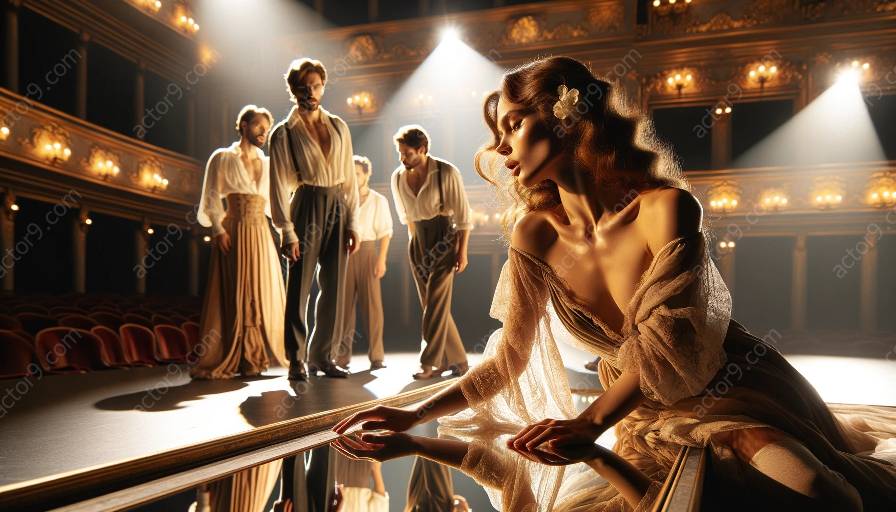As a performer studying the Chekhov technique, it's essential to understand how imagery and visualization can greatly improve your work. This topic cluster will delve into the impactful role of imagery and visualization in enhancing an actor's performance within the framework of the Chekhov technique. Chekhov technique, developed by Michael Chekhov, emphasizes the use of imaginative and psychological actions to access the actor's creative potential. By incorporating imagery and visualization, actors can deepen their connection to characters, emotions, and the overall theatrical experience.
The Power of Imagery in Chekhov Technique
In the context of Chekhov technique, imagery serves as a powerful tool for actors to internalize and express their characters and emotions. Through the use of vivid mental images, actors can tap into their subconscious and emotional reservoir. This deepens the authenticity of their performance and enables them to inhabit the world of the character fully. The key is to vividly imagine the physical, emotional, and sensory details of the character's environment, circumstances, and emotional states, allowing the actor to manifest a more nuanced and compelling portrayal.
Imagery in Body and Gesture
When applying Chekhov technique, actors use imagery to imbue their physicality and gestures with intention and depth. By visualizing the qualities and movements of a character's body, actors can infuse their physical actions with authenticity and purpose. This heightened awareness of physical imagery enables performers to embody characters with a heightened sense of presence and believability, enriching their performances with a captivating physical language.
Creating Atmospheric Imagery
In the realm of Chekhov technique, actors are encouraged to create atmospheric imagery to establish the emotional and sensory landscape of a scene. Through visualization, actors can flesh out the environment, weather, and overall atmosphere of a performance, which has a profound impact on the audience's immersion and emotional engagement. This skill elevates the actor's ability to effectively convey the mood and atmosphere of a scene, drawing the audience deeper into the theatrical experience.
The Role of Visualization in Chekhov Technique
Visualization is fundamental in Chekhov technique as it enables actors to manifest the inner world of the character externally. By visualizing the character's inner psychological reality, actors can authentically embody their thought processes, emotional responses, and internal struggles. This deepens the psychological complexity of the character and allows the audience to perceive the rich inner life of the character.
Character Transformation through Visualization
Within the Chekhov technique, visualization aids actors in embodying the transformative journey of a character. By mentally envisioning the character's evolution and growth, actors can authentically portray the changes and development in the character's psyche and behavior. This skill enriches the depth and dynamism of the character's arc, delivering a more compelling and multi-dimensional performance.
Visualization for Emotional Truth
Visualization plays a crucial role in accessing and expressing the emotional truth of the character. Through visualization, actors can access their own emotional memories and experiences, allowing them to imbue their performances with genuine and deeply felt emotions. This authentic emotional connection resonates with the audience, forging a profound and meaningful theatrical experience.
Practical Techniques for Actors
To fully utilize imagery and visualization in Chekhov technique, actors can undertake specific exercises and approaches to hone their skills:
- Object Exercises: Engage in exercises where actors imaginatively interact with objects that symbolize various emotions and states.
- Spatial Awareness: Develop spatial awareness by visualizing the physical and emotional qualities of different spaces to create atmosphere and character relationships.
- Body Movement Visualization: Practice visualizing the character's physical movements and embodying them with authenticity and intention.
- Emotional Memory Work: Utilize personal emotional memories to access genuine emotions and richly portray the character's internal world.
By consistently implementing these techniques, actors can refine their use of imagery and visualization to enrich their performances within the Chekhov technique.













































